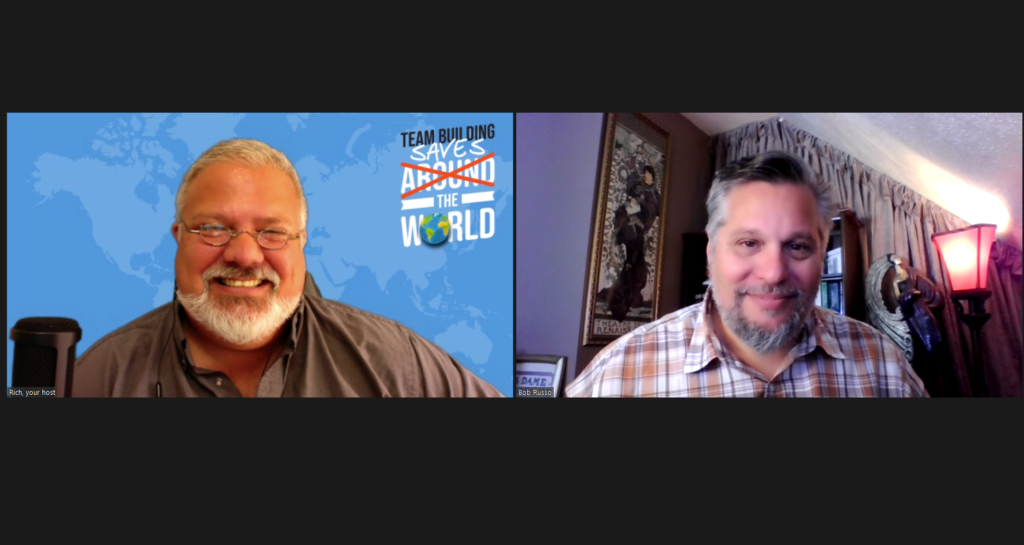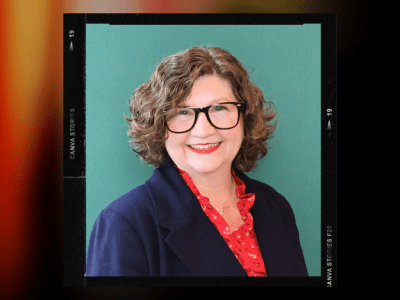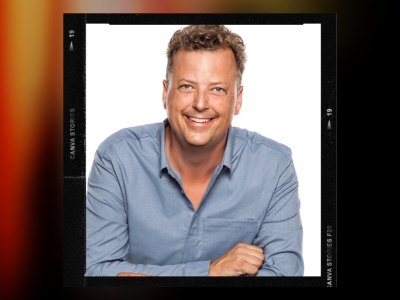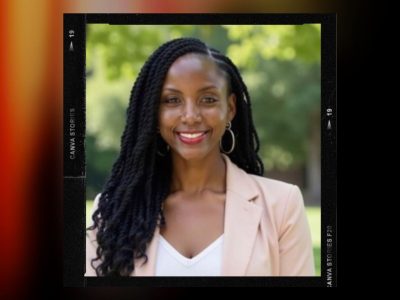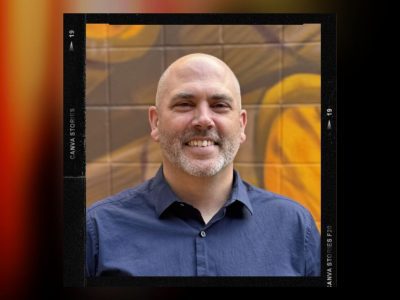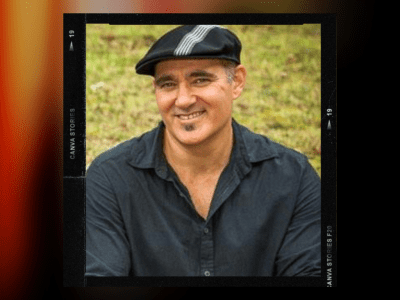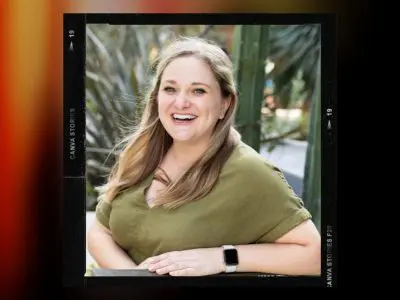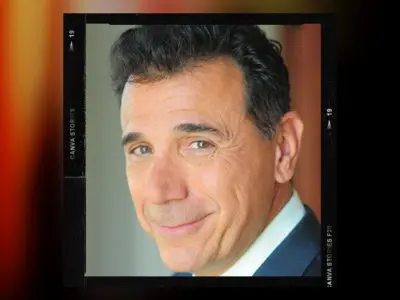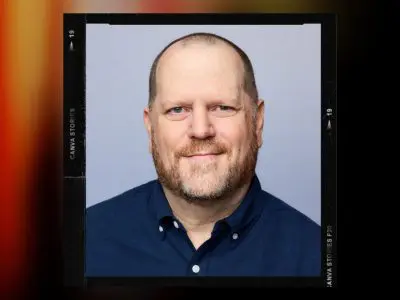The Return to In-Person Events
w/ Bob Russo
Use the buttons above to listen now.
Transcript - The Return to In-Person Events
Rich: On this episode of team building saves the world is right now, it sounds like you’re saying that clients are looking to come back to in person.
Bob: You can still do the hybrid or the parallel event. Okay. You need to make hard choices though.
Rich: Let’s talk hybrid though. Yeah. What do we have look at what’s in the middle
Bob: and what this really is in secret.
Uh, still
Rich: paying that bill still sounds. But yeah, it’s still Haiwaii
Bob: so is there a balcony
Rich: once again, it’s me, your old friend Rich Rininsland host of team building saves the world, the show where I speak to the leaders and innovators to the team, building industry from all across the globe, trying to find out what about that industry is so important and especially in the world of today and today, we’re talking about in-person events with the executive director for strategy and creative for VDA Mr. Bob Russo, the first I need to share some love with my supporters of team bonding. If your team is ready to experience teamwork through the power of play, the visit teams, bonding.com to learn. And our team joined me, welcoming a man who has over 30 years of experience and the event world theatrical design.
And in 2021 was named when a BizBash five hundreds, most influential event professionals. Mr. Bob Russo. Hey there, Bob,
that sound, you hear a small group of people. I keep trapped under my desk just to applaud.
Bob: I’m all for midget bonded.
Rich: And that’s one for the quote board. So Bob, let’s start up, uh, tell everybody on my team out there, who you are and how you got yourself into this industry.
Bob: Well, you don’t have enough time for the, how I got here.
Did as an old theater hack, but like a lot of us, right. Wanting to be an actor, discover that boy, I was no good at that and, uh, jumped to the other side of the world to the production side and, uh, was designing costumes and designing scenery and then decided I really wanted to make some money. So into the corporate side where they have all the money they keep the money there..
Rich: True enough. True enough. So, uh, can you explain for us what VDA is and what do you guys do?
Bob: VDA is an experiential design agency and we ideate and produce events around the country, around the world. Experiential events, conferences, trade shows, theme events. We also do a museum exhibitry. Themed retail. Uh, you may have seen some of our work in the Boston area.
Jordan’s furniture is a VDA project.
Rich: Then how did you get into that? Because that seems a very specific niche.
Bob: So one of the things that I really love about working with VDA is they’re fearless. And someone comes to us with an idea. And, uh, there were a lot of companies that might say no, or you’re crazy, and you can’t do that.
And we just say, yeah, sure. Um, I guess we can figure it out. And so the guys at Jordan’s came to us and said, can you build us a, uh, um, you know, a giant atrium made entirely of jellybeans. And we said, well, I’m sure we could do that. Given enough time and enough money. Well, they gave us enough money, but not enough time.
It’s things just fall into your lap. It’s word of mouth. It’s being around for a while. VDA is celebrating their 37th year this year
Rich: getting into it though. VDA of course, I love the fact that your, your company is very much what the client wants. You. So you’re going to, so it’s, everything is unique.
Bob: Yeah.
We’re more of a boutique agency where everything we do is really a one-off and the cookie cutter. Here’s here’s, you know, a line of 10 by 10 trade show booths running down, running down a row. Um, each one is unique and custom built.
Rich: So going by that, give me an example of what it was like. I mean, let’s, let’s talk about the, the jelly beans.
Um, let’s talk about what it looked like creation to actual execution. Pre pandemic, something alive, something along that size.
Bob: Well, something along that size, uh, you know, there’s, there’s, again, each of these things are so unique. So for that, for BeanTown, we needed to actually, uh, Uh, work with the town of Reading to create a new building code because sugar burns.
If you want to build out of a flammable material, they want to know how are you keeping it from bursting into flames and killing a lot of people. And what’s the burn rate and what is happens when it melts and drips and who gets killed by that. And what’s the offgassing and blah, blah, blah, blah, blah. So build an eight by eight by eight room, send it to a lab in Texas and they lit it on fire and captured data.
And then the town of Reading said, no, so we built another one and sent it back and that one performed better. And then they built a third and blah, blah, blah. So we now have authored a building code for building things out of candy and the kind of reading. Amazing
Rich: check the code. Nice. Yeah. So that’s something you had to come up with pre.
Now you, now you have this new thing. I mean, COVID-19, you know, as, as well as things are turning still has not gone away. Um, you know, we’re, we’re still getting new new ideas about how to combat this and get back to somewhat normalcy day after day after day. But even the CDC itself, I was just looking on their website today.
They still recommend keeping things to small events. But they don’t have a clear definition of what that even means. So what do you have to go through today in order for someone like VDA to create something for a client?
Bob: So I just came back from Chicago. I was speaking at a, at a show called experiential marketing summit topic was about budgeting, but that was one of the points I touched on was COVID protocols are throwing everything for.
A year, right? There is no clear direction on, on what we should and shouldn’t be doing and a very state to state. So for talking national it’s state to state, if you’re talking internationally, might as well just go home. It gets harder and harder. All those things pile on. I had an event the beginning of 2020 in January of 2020, right before the lockdown where the facility had added in some new metal detectors to an entrance to the building.
And this was an entrance that a lot of our guests would enter through. And this is a 35,004,000 person event. They were dragging the Lafayette would come through these doors, but now there are metal detectors. Um, we had to delay the program by over an hour and a half because people couldn’t get into the buildings.
And I’ve seen that same thing happening with COVID where there are new protocols. I need to get a temperature check. I need to see your, your vaccination card. I need to ask you this list of questions and it’s no longer just let’s go into the event. It’s. I need to spend a minute with you in a minute with the 500 people behind you, that’s 500 minutes and it’s going to take a while for this to happen.
Right? So we were talking budget because it impacts budget. You’re talking about busing people to an event, a 50 person, 60 person bus, no longer holds that many people. So do you add more buses and spend more dollars or do you use this as longer and spend more time? And what do you do with the people that arrived at the beginning before the people at the end to get there
you know, these are the challenges that we’re facing, trying to re-imagine live in-person events, because everything piles on plumbing.
Rich: And that’s just on your side, I mean, the client, what kind of, what kind of problems with the client themselves facing?
Bob: Exactly. So the clients are facing those problems are facing capacity problems with venues where the venue says, yeah, we can hold a thousand people.
Well, not anymore. Really. We can only hold 500 people. And they’re also facing a contractual issue because a lot of times with larger live events, you get the room for free, right. But you have a food and beverage minimum that’s based on a thousand people because you can fit a thousand people in there.
Well, now I can’t. And a lot of the venues haven’t lowered those food and beverage minimum. So I’m paying for a thousand people and I can’t put a thousand people in the room. So the clients and venues sort of going head to head and arguing over that kind of stuff. You’ve got, everyone has lost money during this.
And when it’s trying to recoup revenue and the contracts are all changing, that would be the one thing I would tell everyone. I said this at my talk out in Chicago last week, read the contract that one’s changing up the company. I had a client planning and event at a space that she’d been to before and she had four breakout rooms.
And just to level set a breakout room, the a V should cost let’s say 25 grand for a reasonable size breakout room had four breakout rooms. She didn’t notice in our contract, she was not required to use the in-house vendor. The in-house vendor handed her a bill for four breakout rooms for $760,000. Oh,
Rich: so, so familiar with zoom anymore.
You, you say the words breakout room and I, it means one thing, what does a breakout room mean mean for that
Bob: in live events? Uh, if you’ve got a conference set up, you usually have a general session where everybody comes together. We get all the attendees in one room and it’s one big group of people listening to speakers, watching content learning.
That you break up and you go into smaller groups for targeted learning. And this group is going to learn this piece and this group is going to learn a different piece. And then maybe in the afternoon they’ll switch. And, uh, you know, but it’s, it’s targeted smaller groups, so everybody does it. Right. But normally it’s 25 grand, not 160 something thousand dollars.
Rich: Well, let’s look at it. Look, how did you guys actually handle the first lockdowns? Because we cause everybody got hit suddenly. I was, I was saying the same thing I was talking about to two coworkers of mine and we were reminiscing last, not this, this year’s, but last year’s March where we just started losing work.
Right, right off our scheduled, everything was just dropping off. So, what did you guys do? How did you pivot? What did you come up with?
Bob: VDA? We were lucky. We early on made the decision not to have any layoffs, not to have any furloughs, to keep our team intact. And then, uh, I hate to use the pivot word, but I will, we pivoted and began to examine, um, online and virtual.
So we had always done some online stuff and some hybrid stuff. But pre COVID a virtual event was sort of, I call it a fly on a wall type of thing, where, but a camera at the back of the room back in that big general session, you put a camera and everyone gets to watch what happens in that room. Okay. Um, but nowadays it needs to be far more curated content that is created specifically for an online virtual audience.
And there are two types of virtual events. There’s what we’re doing now. Virtual zoom type of peds in a box Brady bunch. Judah chatter over video calls right now at zoom, whatever, or there’s a more immersive 3d environment that is self navigable. And it’s more like a video game. It’s more financial, um, and VDA chose to invest and create our own, uh, it’s called VDA virtual, uh, platform.
And we had some great success with. Um, it started to taper off at the end of 2020 to 2021. And then the Delta variant came in. It’s come zooming back into we’ve had a lot of live cancellations and a lot of folk who are turning over to the virtual side. But one of the things that is going to happen, live events, not withstanding virtual is here to stay.
Rich: I want to get into that. I definitely want to get into that, Bob, but that’s going to be, that’s a heck of a conversation unto itself. Let me let you step away just real quickly though. I need to actually take a second and talk to my team out there about a company I’m very proud to be a part of team bonding.
Team bonding was founded over 20 years ago with one simple question. How can employees have a great time while fostering strong, authentic bonds between people who work together? They’ve created a catalog of innovative events using the power of play as a learning tool and tapping into the correlation of work and play from scavenger hunts to jeopardy and so much more.
The team bonding of activities live virtual and hybrid. Maximize the impact of team building with an accent on fun. So visit team bonding.com to schedule your event. Team bonding when you want seriously fun results. And speaking of live virtual and hybrid, we’re back with Bob Russo from VDA. So Bob let’s get into the live version for the in-person I should say, versus virtual versus.
What are we seeing what’s happening now?
Bob: Well, in the beginning, we’re all trapped in the virtual world. Right? And then as things started opening up, there was this kickback. No one wanted to do virtual note. I want to do a live event. I don’t want to do virtual. Forget it all live. I want to go a hundred percent live and then.
Okay, maybe we will consider some virtual. Maybe we will consider some hybrid looking at it as a sort of a pendulum. Right? You’ve got a pendulum that swings and sooner or later, it’s going to slow down until it levels out. And I think that’s, what’s going to happen because we have taught people. It is possible to stay in your home or in your home.
And virtually attended conference. You don’t have to go to time zones out of your way to up to spend thousands of dollars and get on a plane. You have to spend for hotel. You don’t have to eat lousy chicken in a ballroom somewhere. You can get the information you need. Um, and if it’s done properly, you can still have an experience.
You can still have a team events. The live events are really all about social interaction, relationship building, creating emotion, right? You need to find a way to do that on the virtual side as well. So that’s why we opted for a more immersive in a lot of the programs out there up for that more immersive feel to create that sense of relationship.
That sense of togetherness. How so? Well, it works. Um, bunches of them out there. You can, you can still interact, but it allows you self control. So you can actually computer explore this virtual world. You decide where you’re going to go. You decide because some content can be live. It can be prerecorded.
What I want to do there. I want to go and play that again to want to have music track playing in the background, but I want to see this breakout now with this spray I got now, when it’s no session, am I going to see it live when it happens on this day? Or am I going to go and see it later? Cause that’s the other nice thing too, right?
It takes time zone out of the equation. So I can have my general session Eastern standard time at 9:00 AM. And if that’s inconvenient for attendees who are in India, then they can watch the recorded version later when it’s convenient for them. And so on and so forth.
Rich: So they’re all they’re going to miss on is interacting with their fellow employees who happened to live on the east coast, but then you can also do
Bob: something called simulive,
Rich: go, yeah, it’s a fun word, right?
Bob: As you record this content and you’re going to play it on a later day. And then at the end, you’re going to have a live Q and a. It’s still alive. Q and a, but I watched recorded content. The speaker didn’t go through the whole spiel again. I watched his recorded talk and then I get to go online and pick up my questions and ask them in real time.
Hey, you said blank. What did you really mean by that? Or if I do this, how does that affect your answer? Interesting. Yeah, the other fun thing with virtual and hybrid is it can get, um, a much longer shelf life, average conferences, three or four days. And keep a virtual one online for a month, two months, as long as you think you’re going to still have audience clicking in and looking at it.
I have one client who we did a virtual trade show booth for that has, it’s been up now for, I think eight months just signed on for another six because they now use it more than they use their website. They refer their clients to this virtual interactive space. Explore our trade show booth. We’ll teach you all about our company.
Is there a website because it’s.
Rich: Yeah, that sounds it let’s talk hybrid though. Yeah. What do we have? What can we what’s in the middle?
Bob: The middle is so, so the definition of hybrid and I prefer sometimes the term parallel events. I have events with an audience and you’ve got a virtual event. And what this really is secret is broadcast TV.
Right? We’ve been doing it for years. You never see a live TV show where the host doesn’t address the, the, the out of studio audience. They’re always addressing the out of studio studio audience, right. Live audience, but they also address the out of studio audience. The content is geared towards both the live audience and the out of studio audience.
When they come back from commercial break, it’s wrapped up and we say, in the break, we talked to blanketed blanket. We did this. It’s the same thing. When you’re doing a well crafted parallel event or hybrid event, you need to be paying attention to both audiences. Okay. Ways to bring those audiences together.
One of the ways we recently talked about doing it and shut me up, we’re going on too long for budget purposes. Is those breakouts we talked about earlier. Do we need to do them live? Because a great way to save some dollars because in the beginning, everyone had a live event budget, and they could take that money and go, well, I need to do a virtual event.
There you go. Well, now they need you to do that live event and the virtual event, but no one has budgeted for two events. Where’s the money coming in. And nobody has any data. There’s no metrics on virtual events. What’s my ROI. What does it cost me to do it? What’s reasonable. Nobody knows if I take the breakouts and I do those all virtual with the live audience before they go to the live event and the virtual audience.
Now I’m bringing both audiences together. I can reduce my onsite time. I reduce hotel. I reduced food and beverage. Even a day for 500 person events at 2 75 for a hotel room and 150, $160 for food and beverage a day. You’re near half a million dollars in cost savings by cutting out a day or two. There’s your money for your virtual event?
Right? Right. And quickly to explain the term parallel. One thing that is a little bit of a misnomer is that a hybrid event is alive in a virtual it’s the same thing. Yeah. And it’s not, it’s never going to be, we all know that the live experience is going to be different. The virtual experience is going to be different, but what they need to be is a live event, a virtual event that is striving towards the same goal.
They happen, parallel tracks, same goal at the end. Now
Rich: there’s no way for the people who are doing the in-person to actually meet. Virtually with a hybrid folks.
Bob: Well, they can do this. So the nice thing in the scenario I just described is align with the virtual folk. They’re all doing the breakouts in virtual.
When they get on site, you can still have that virtual version where maybe it’s, you know, they’re looking in on what’s happening live. But now they know people there. So if you’ve got chat functions built into your virtual platform, maybe you can talk live with some of those phones, whether it’s text to check, whether it’s video chat, whether it’s something like what we’re doing now with, you know, the zoom, right?
So there, there are certainly ways. And I think the biggest struggle in virtual, and this is something that the folks at team building can help with is creating that connection with the virtual audience. Because it’s easy when you’re in the same room, right. To create the connection in that relationship, it’s much harder virtual, right.
It’s much harder online because if I’m not on camera you don’t know if I’m really there. Right. I could be listening. I could not be listening. Yup. Yup. There’s no way to know that I’m engaged. In the program
Rich: for the past several arrive for the past several in-person events that I’ve had to do. I always have the opening line of it’s so good to know that none of you can mute yes.
That you were here and we have to talk to each other
Bob: precisely.
Rich: So what’s your recommendation, would you, I mean, which do you think is the best way to do. ’cause right now. It sounds like you’re saying that clients are looking to come back to in-person, but you recommend the hybrid formula for them or, you know, what would you,
Bob: well, I would, I would say definitely you need to be doing, you need to have a virtual component.
Um, I’ll tell you a quick story. VDA, um, was involved for many, many years with the large tech companies user conference, 15,000 in-person attendees in Las Vegas every year. Um, at the same time, and this is pre COVID, they had 8,000 online attendees.
Rich: Okay.
Bob: Or COVID, and that was a feeder system because people would go online.
They would watch the fly on the wall content, but that motivated them to show up in person next year, because they were watching. Such a fun time that they wanted to be a part of it. And they had a ton of FOMO going on, and that was a feeder system to keep the in-person numbers going. But now that we’ve proven that we can do this and we can do it better than a fly on the wall, people will demand it.
Right. So I, I think the, the savvy companies are going to be planning for alive and a virtual component and it depends on what type of a program they’re doing as to how robust that virtual program is going to be versus how robust the in-person program is going.
Rich: Um, what kind of benefits are you seeing for this?
I mean, is it, does it for the virtual? Yeah. Well, for anyone for the hybrid, I mean the, the going in the direction that we’re going, look, what kind of benefits.
Bob: So you’re you’re I think the largest benefit is, um, the audience expansion. Okay. If you’ve got an in-person event and you need to convince someone to spend thousands of dollars to come to your event Even if you’re hosting them, you need to convince them to leave their family for four or five days, pull internationally, traveled, nationally deal with that on possibly deal with now the health ramifications of that, you better have a good Ben.
I have a good pitch. Right, right. Or you could do it virtually. We’re going to make sure you have a good time on the virtual side. And we’re going to make sure that you still get the same education, the same level of learning that our in-person attendees get probably at a lower cost. I think we’re far away from seeing virtual as a cost center.
I haven’t, I’ve seen very few people charge for a virtual event. I’ve seen people charge for live events to go to the conference. You obviously have to pay your attendance, your registration, right? Sure. Haven’t seen anyone successfully charge for a virtual event yet. Hmm.
Rich: Okay. A question that I’ve been asking a lot of my guests I’m, I’m a CEO, CFO, whatever it happens to be for a corporation and.
It’s been over a year since I’ve been able to see my fellow managers let alone just the employees for the company. Right. Uh, sell me, how are you going to, to pitch me on what it is? We can do what my options are.
Bob: Well, I think you can still do the hybrid or the parallel about, okay. You need to make hard choices.
You’ve got to. So, so I was talking earlier about that 3000 person, 4,000 person events that had just before COVID, that was an all hands, all employee meeting for a company. And they had their employees come from 15 different countries around the, um, and it was the C level executives down to the janitors and, and laudable for them.
Great. I’m glad that you did that. I’m glad. Cause I got paid.
Rich: But
Bob: my, for hard choices who gets to go to the live one versus who gets to go to the virtual, right? It’s more important that your C-level executives are there and speaking and shaking hands with who, with the janitors or with middle management or with sales team that came in from India. It’s hard choices.
We need to re-examine the demographics of who are going to the live event versus who are doing the, the online.
Rich: But if I’m planning on doing an event, what kind of things should I be looking into for myself and my company,
Bob: you should be looking into identifying why, why are we having this event? Because that will drive all your future decisions.
Okay. Is celebratory event, is it a learning event, uh, you with passing on information? Is it, is it, you know, there’s sales incentive event, you sold the most insurance, so you get to come to the fabulous. That doesn’t work very well in virtual does it? Isn’t Vista Hawaiian that you wouldn’t be enjoying, but you’re not.
So it’s figuring out what type of event and the why, and then really getting deeper into location choice and looking at those contracts and figuring out what you can and cannot do. Looking at your locations from a standpoint of internet accessibility and speed is going to become far more critical than it ever has.
You’re talking about doing virtual and you want to be streaming content from your event, from your live event. I remember this is tangential, but it’s it’s you didn’t ask the question then you were stupid. I was in, uh, uh, I forget which island I was on. I think it was The Bahamas and we were doing an event and I asked I had to get a, I was on Verizon.
I had to get a phone that would work on the island because the only didn’t have Verizon. They had a. And I asked the lady when I was there for the same visit. I said, my phone’s not working. She explained to me why. So when I was going back, I needed to get a different phone to just to get a temporary phone.
But she’s, she laughingly told me that they had just hosted the Verizon conference and none of the attendees phones worked, including the CEOs phone wouldn’t work. Oh my, oh my, that was the last one she planned I’m sure. Again, that’s what I mean. You really need to dig deeper and deeper these days, like that is not going to happen anymore, but expecting to go somewhere and have really good internet service is going to be tough.
You need to make sure that before you enter into it, we did an event for the mayors of cities from around the world, a virtual events and the mayor of a town in Africa only only got internet service from two to 4:00 PM at his house. After that the internet service moved to a different neighborhood and he would have to chase it, get back on line.
Wow. And rehearsals and his speaking engagements around when he would have internet, because it wasn’t a problem. That’s the way it is every day. Just take it for granted that, oh yeah, it works. Sure. 24 7 works. Not always, not everywhere.
Rich: Right, but you’re also, you’ve got to look at, I assume, um, state COVID requirements, but will the facilities have those or the
Bob: facilities can usually help you do that stuff?
I mean, and it’s, you also need to look at travel requirements for your attendees can they get in? Can they get out in the beginning? There was, you know, quarantining it’s like, that’s great. They can come here, but they can’t attend the function unless travel a week before the function. Right. You know, they had people sequestered in hotel rooms in Hawaii during the peak of this, where the Hawaii was stuck in your hotel room, looking at the beach for over a week.
Rich: Uh, still he’s paying that bill still sounds. But yeah, it’s still a Hawaii
Bob: so is there a balcony? Cause I’ll take it home office any day.
Rich: What about outdoors? You talk about it person.
Bob: Yeah. Outdoors is a better bag and a lot of companies did outdoors. A lot of, uh, we did a lot of stuff. Um, like permanent outdoor tented venues where people did go outside and sit outside.
Um, but it certainly eases restrictions, but, um, you need to look at all of the food safety protocols for where you’re going and things like that. What are they doing? I know that I was choosing my air flights based on what are the protocols that each airline is flying? Um, at the very beginning, my one of my first trips out, um, normally I’m a jet blue.
I like jet blue, but I flew Delta because Delta was the only airline at the time that had committed to not selling middle seats. So you had a buffer, you went a person next to you. Um, everyone else was selling all the seats at that. So I was on Delta.
Rich: I have so many things I could say that I’m not going to, but let me ask.
So would you say that from the sounds of it, that if you wish to have an in-person event, this is not something that you can do off the cuff, just, just see to your pants. This is something that’s going to take a
Bob: lot of plans. The interesting thing is right now, clients are in this, um, right now mindset.
And only decided that we’re going to do an in-person event. We would finally decided we’re going to do this. So we want to make it happen. Well, when would you like that to happen? Um, we’re thinking two weeks from now thinking, no, it’s not possible. Um,
Rich: they still get into a virtual event with two
Bob: weeks notice.
It’s it’s equally hard. Um, it depends on what they’re trying to do. If you, if you want to do something, that’s sort of canned like this. Well, we’re going to log into zoom. Here’s the link. Have a nice time. I want to do a customized, 3d, immersive experience than that too is like a six to eight week lead.
Rich: Okay, good to know. So let’s look to the future. Bob let’s let’s plan ahead. Go. I want to end this on more of a positive, if I can. Where do you see this all going? Let us say that our COVID numbers continue to improve and we got to be, we don’t get the Lambda variant. That’s going to shut everything down.
Let’s let’s let’s end on that. Upbeat. Where do we see this whole world? The, the events world going?
Bob: I think what we see is let’s go back to that thing. I talked about with the tech company with 15,000 in-person and 30,000 online, maybe not 30,000 online attendees for your conference, but savvy companies will, will be back to planning their in-person taking the precautions they need to take and planning it and budgeting for it.
Including a carefully crafted online presence as well, which will allow them to have a larger audience and audience that is broader geographically than they may have been able to draw before. And it will increase their exposure if they’re doing it right. And that means thinking about it ahead of time and planning for it.
Don’t let your virtual component be like. Here’s what we’re going to do in the live event is going to be this going to be, this is going to be great. And oh yeah, we should do something for virtual. Yeah. You given the same thought and care that you’re giving to your life.
Rich: Excellent. Bob Russo, everyone give them a big round of applause.
I, I cannot tell you how exciting it is to actually be able to go back to in-person. It’s been a lot of fun for me, but it’s also exhausting. I forgot. I forgot how much travel tires me,
but Bob, thank you one more time. Um, can you actually explain to my people where they can get a hold of you if anybody has further questions for you or for VDA
Bob: so you can find me a, it’s a very complicated email address. It’s Bob at VDA Inc com all right. A BLB.
Rich: Oh yeah. I want to make sure we don’t misspell.
fantastic. Thank you so much, Bob. I really enjoyed this. I hope you had a good time. I did, but, uh, well now it’s time to make things a little harder on you. Cause we’re going to put you in the hot seat from a speed round.
see if I were in person, I’d have to have real cars doing this. It’d be a whole thing. All right, Bob, as I explained, during the warmup, here’s, what’s going to happen for 60 seconds. I’m going to ask you a series of completely innocuous, but I think fun questions. Your job is to try to answer them as quickly as possible to see how many you can get.
So if you’re feeling it all correctly, anchor, well, they’re not really correct. It’s more routes, more questions of opinion. The big thing is if you’re feeling competitive, the number to beat is 13 the season. So, okay. Let’s see if we can get through this too. As soon as you hear the music, I’ll ask the first question and the way we go.
What’s your name?
Bob: Bob
Rich: How many kids do you have?
Bob: One,
Rich: if you could be any animal, what would you like to be?
Bob: Gorilla
Rich: If you could live in any television home, which one would you choose?
Bob: Bundy’s.
Rich: Favorite ice cream
Bob: pistachio.
Rich: Would you rather live for a week in the past or the future past?
Bob: Past
Rich: what is your favorite childhood memory?
Bob: Uh, that’s a tough, I was doing so well Rich. Uhh, Sunday Dinner
Rich: favorite cartoon character, Bob.
Bob: Um, Batman.
Rich: Nice if you could have dinner with anyone from history, who would it be?
Bob: A Shakespeare
Rich: favorite childhood book?
Bob: Narnian
Rich: something you remember from elementary school?
Bob: Uh, the Dame school was where I went to elementary.
So.
Rich: All right. Well, Bob let’s see blur. How do you think you did?
Bob: I don’t think I hit the 13. Cause you taught me what the favorite childhood memory.
Rich: You actually got 11, 11, but that’s actually been better than average, so well done, sir. Well done to you. Thank you. And thanks for again for coming on board and thank you. My friends, my team out there, that’s gonna do it. That’s another wrap-up for team building saves the world. If you enjoy this show or, you know, if you’re brand new to it or you’re an old fan, please feel free to share it with all of your friends.
If you want to make sure that all of your cohorts and coworkers and so forth, all get to know what this show is. We would appreciate. As much as we appreciate you, you can find out all about us from all of the social media is a team bond podcast. Also, if you want to see future or rather past episodes of the podcast, all you have to do is go to team bonding.com/podcast to find out more until next time.
My friends always remember no matter where you are in the world. No, but as long as you are within the sound of my voice, you are now forever on my team. And I am always going to be on yours. Good luck. And we’ll see you all next time.
It’s been said that you learn more about a person in an hour of play than in a year of conversation. So why not put your coworkers to play with the help of the team at team bonding team bonding was founded over 20 years ago with one simple question. How can employees have a great time while fostering strong, authentic bonds between people who work together?
Their catalog of innovative events include scavenger hunt, jeopardy, and much more each activity whether live virtual or. Maximizes the impact of team building with an accent on fun. Visit team bonding.com to schedule your event now, team bonding. When you want seriously
fun results.
November 1, 2021
What is it like to plan in-person events in the world of COVID? What are some things that you need to consider?
Depending on where you are located, in-person events may be returning. Does this mean virtual events are a thing of the past? According to one BizBash’s top 500 people in the event industry, Bob Russo, they are here to stay. In this episode, Bob talks about what it takes to coordinate an in-person activity and why parallel events might be the way of the future.
Bob Russo: Bob has over 35 years’ experience in event and theatre design. After a brief stint as an actor, he realized his shortcomings and moved to the production side of the business. His work as an award-winning event designer, stage combat choreographer, and Emmy nominated costume designer, affords him the unique ability to interpret a client’s vision. His work in the museum and corporate world has been seen all across the Continental US and as far away as South Korea, Tokyo, Alaska, and Hawaii.
As Executive Director of Strategy & Creative at VDA, Bob works with start-ups and fortune 500 and 100 companies while mentoring the younger design generation and still finding some time to ride his motorcycle. Bob Russo is an expert in the design and logistical planning/ reality of corporate events, themed events, retail and museum environments, and corporate facilities. Bob’s subject matter expertise includes fabrication and materials selection, site selection, industry trends, lighting, technological integration, and experiential.
Additionally, you can catch Bob at numerous industry organizations such as Meeting Professionals International (MPI), International Live Events Association (ILEA), The Exhibit Designers and Producers Association (EDPA), The American Society of Association Executives (ASAE), The Experiential Marketing Summit (EMS), a recurring guest speaker at The Special Event, Connect Florida, Connect Georgia, and as a recent Keynote Speaker at the Global Pharma & Medical Meetings Summit.
" The live events (in-person) are really all about social interaction, relationship building, creating emotion, right? You need to find a way to do that on the virtual side as well. So that's why we opted for a more immersive experience for a lot of the virtual experiences out there to create that sense of relationship, that sense of togetherness."- Bob
Get more human resources and leadership advice.
Less drama? Greater teamwork and job satisfaction? TeamBonding is here to help you build a stronger and happier team. Subscribe to get our team building podcast and thought leadership blogs sent straight to your inbox.
